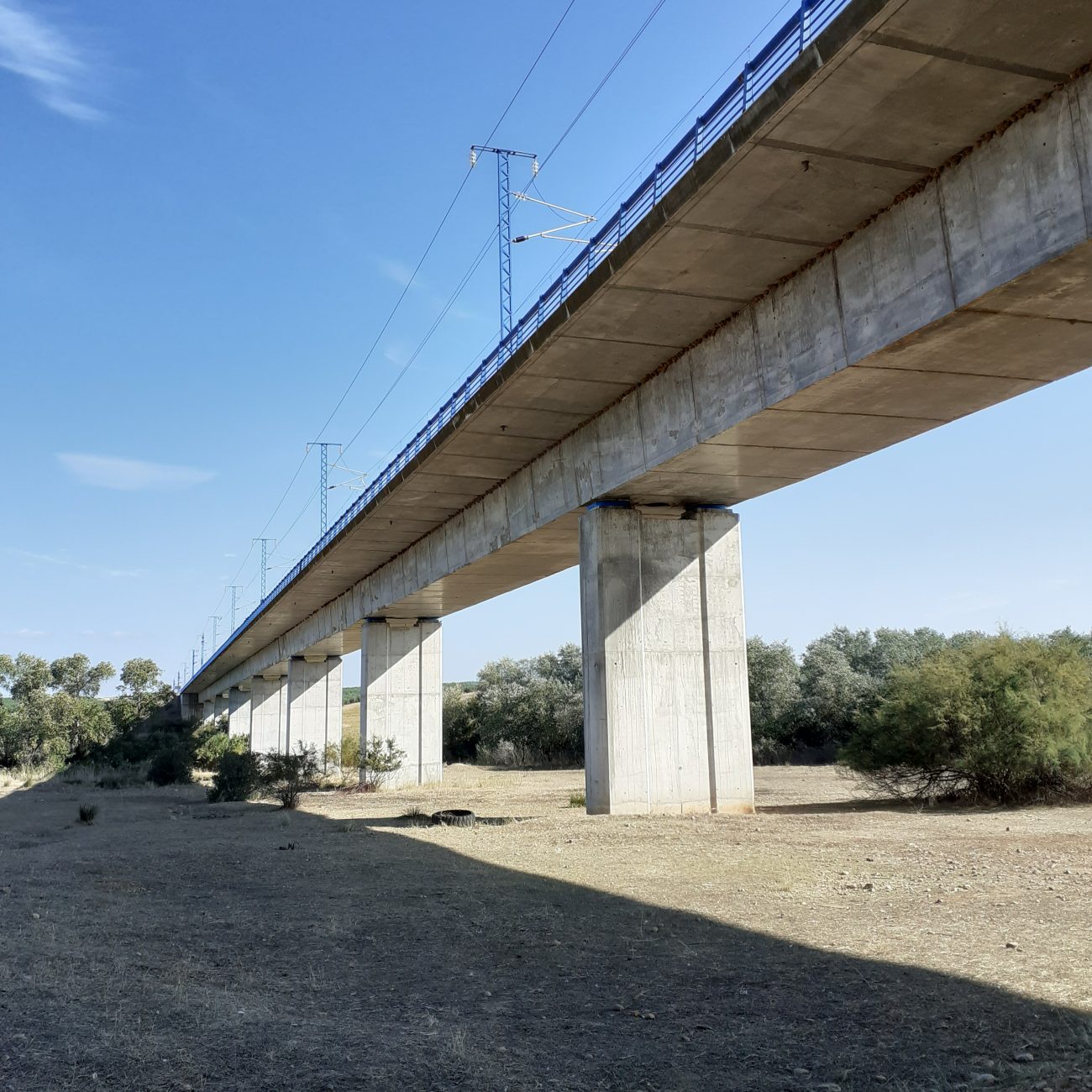Funded with European FEDER funds managed through CDTI, this research project arises from the expressed need of ADIF to find alternative solutions to the traditional inspection of bridges. The objective is to address structures that are difficult to access and problems that are challenging to visually identify.
The project is based on clear premises, including the analysis of a specific viaduct—the Marota viaduct on the High-Speed Cordoba-Malaga line. It aims to propose an energy-autonomous solution and visualize the results of the digital twin through a real-time web system.
The developed digital twin focuses on analyzing specific problems such as prestressing breaks, movements of the deck with consequent displacement of supports, and chemical damage to concrete that can lead to a loss of original mechanical properties, resulting in cracking and excessive deformations.
The predictive monitoring system is based on a battery of sensors, including accelerometers and laser vibrometry devices for detecting vibrations and unexpected modal behavior, as well as geophones that, along with the previous sensors, can capture prestressing breaks or movements of supports. Other sensors, such as strain gauges or infrared barriers, support turning on the system and saving energy consumption, as well as measuring the passing train’s configuration and speed to attribute behavior to the structure. Finally, a weather station, temperature and humidity sensors for concrete, and a GPS station for synchronizing sensor measurements are installed.
Data from the various sensors are recorded in a data acquisition device, which preprocesses them to reduce the volume of information transmitted to the cloud. The digital twin calculates theoretical vibrations and compares them with actual ones to assess normality. The developed machine learning algorithms enable the model to learn from all recorded data and refine its accuracy as the number of data increases. Everything operates in the cloud and is represented on a website specifically developed for the project. Alerts have been set based on predefined thresholds, triggering notifications to the responsible party about the type of alert and associated information on the detected problem.

Calle Núñez de Balboa, 120
28006 Madrid
Spain
Tu privacidad es importante
Nosotros y nuestros partners usamos cookies para personalizar el contenido y pueden recopilar información no confidencial. Para más información visita las Condiciones de uso.